Contemporary and Future Transmasculine Pregnancy and Postnatal Care in the UK
Riley Botelle – Medical student, King’s College London
Dean Connolly – Foundation doctor, King’s College London
Shawn Walker – Senior Research Fellow, Honorary Consultant Midwife, King’s College London
Susan Bewley – Emeritus Professor (Honorary) of Obstetrics and Women’s Health, King’s College London
Published in The Practising Midwife Volume 24 Issue 5 May 2021 https://doi.org/10.55975/FOYH6276
Summary
Transmasculine people seeking pregnancy care face: poor healthcare provider knowledge and guidance around their specific needs; feelings of loneliness, exclusion and isolation related to navigating the external world, internal identity and gender dysphoria while pregnant; and inadequate access to culturally competent services. Considering short- and long-term clinical, research and policy perspectives in the UK, there is a need for: quantitative and qualitative research into the outcomes and experiences of pregnancy; clear guidance from midwifery and obstetric bodies; trans-inclusive standardised curricula; development of community-led peer support; and consideration of specialist training materials and roles.
Introduction
Healthcare in the United Kingdom (UK) is largely provided by the taxpayer-funded National Health Service (NHS), committed to clinical and cost effectiveness, delivered across a primary-secondary divide based on general practice and midwifery during pregnancy. Transgender (see box) healthcare is predominantly provided by NHS gender identity clinics (GICs) and some private practices. Clinicians without a special interest may not have much knowledge or awareness of the needs of transgender patients. Consequently, trans people accessing healthcare risk facing ignorance, misinformation and hostility. This may reduce their ability and willingness to engage, adversely impacting health outcomes. Personal dignity and trusting patient-provider relationships may be compromised, long recognised as crucial for pregnancy and perinatal care. While (social) media reports acknowledge the presence of pregnant transmasculine people in the UK, data that would allow estimation of incidence is currently not collected. Existing research on experience and outcomes of transmasculine pregnancy has identified significant but surmountable barriers to equitable and inclusive care. Midwives, who have a long history of advocating for disadvantaged individuals and populations, may have a significant contribution to make towards improving the ability of pregnant trans people to access the respectful care that they need.
Transmasculine people – terminology
The term transmasculine is used throughout to refer to the range of people registered female sex at birth who later do not identify as women. Transmasculine includes transgender men and some non-binary people. Gender incongruence is not a mental disorder, although it may be accompanied by distress (‘gender dysphoria’) and discrimination. ‘Transition’ is a non-linear process of changing various facets of individuals’ lives in order to align with their gender identity. Some will want all elements of transition. Others will want some or none. The changes may be social (such as name, presentation and pronouns), legal (such as legal name and gender markers), medical (such as androgenic hormones) or surgical (such as ‘top surgery’/bilateral mastectomy and ‘bottom surgery’ – a term spanning a diverse range of procedures including removal of reproductive organs). They may occur in any order or simultaneously. Hysterectomy precludes pregnancy. Depending on the exact procedure, feeding may be possible, and catheterisation, pregnancy and birth may be impacted (for example, by neophallus creation).
Lack of specialist knowledge in gender and pregnancy services
Historically, reproductive choices for transmasculine people have been limited by law and medical advice. For example, the 2013-2019 NHS England Interim Protocol (now withdrawn) recommended prophylactic hysterectomy after five years of continuous testosterone use due to an unevidenced risk of precancerous endometrial hyperplasia. The tiny evidence base exploring the effect of testosterone on fertility and reproduction1 leaves GIC clinicians limited in their ability to offer accurate preconception, fertility and pregnancy advice, which is largely missing from clinic literature discussing the effects of gender-affirming/cross-sex hormonal interventions.
Our combined experience as advocates, clinicians, educators and service users points to other problems with counselling including advice that testosterone is an effective contraceptive so long as menses have ceased and will cause sub- or infertility, but that any pregnancies conceived on testosterone should be aborted due to teratogenicity risk. There is insufficient evidence to support these claims and little consideration of the potential harms of iatrogenic infertility or abortion of a wanted pregnancy. There are many reported instances of transmasculine pregnancy during and after testosterone therapy.2-5 Transmasculine people have started on androgens without being asked about future pregnancy plans, thus have not been advised about stopping or restarting testosterone. Some have been discharged from transition-related care (which includes counselling) when pregnant. Plausibly, past clinicians perceived the desire for, or actual, pregnancy, as challenges to requirements for adherence to traditional gender roles, as if it were impossible to both want to conceive and gestate a baby and truly be a man. People accessing GICs may conceal their desire for fertility preservation and biological parenthood, fearing that it will create an additional barrier to receiving androgen therapy or ‘top surgery’, that they may be dissuaded or have to be re-referred when UK GIC waiting lists are over two years long. When trans men do become pregnant, they often find that midwives and obstetricians have a limited knowledge of transmasculine people and their healthcare needs. Professional knowledge gaps may result in users’ reluctance to access reproductive and sexual health services.
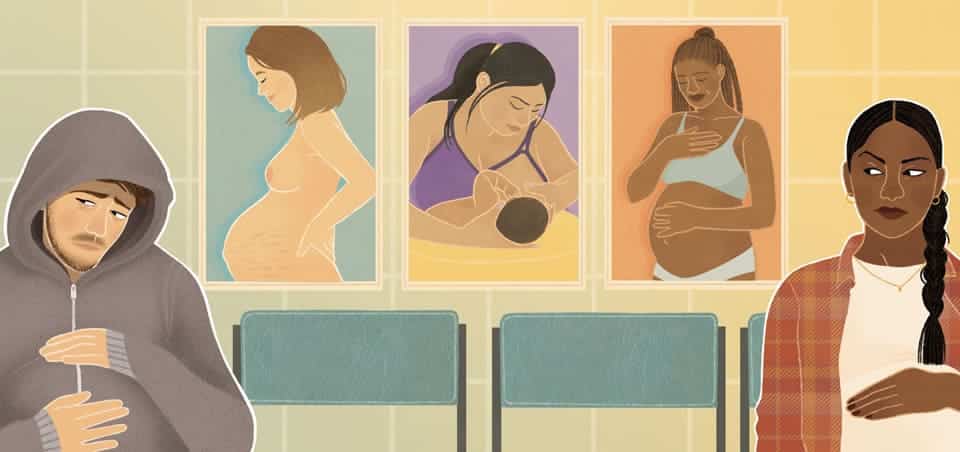
| Transmasculine people – terminology | ||
|---|---|---|
| Organisation | Guidance | Relevant quotes |
| Cochrane Collaboration | None | |
| World Health Organisation | None | |
| International Federation of Gynecology & Obstetrics | None | |
| World Professional Association for Transgender Health | https://www.wpath.org/publications/soc | Absolute contraindications to testosterone therapy include pregnancy… Reproductive options for FtM patients might include oocyte (egg) or embryo freezing. [These]…could later be used with a surrogate woman to carry to pregnancy…Stopping the testosterone briefly might allow for ovaries to recover enough to release eggs; success likely depends on the patient’s age and duration of testosterone treatment. While not systematically studied, some FtM individuals are doing exactly that, and some have been able to become pregnant and deliver children. |
| National Guidance | ||
| National Institute for Health & Social Care Excellence | http://publications.nice.org.uk/patient-experience-in-adult-nhs-services-improving-the-experience-of-care-for-people-using-adult-cg138 | Ask the patient how they wish to be addressed and ensure that their choice is respected and used. |
| Public Health England | https://www.gov.uk/government/publications/nhs-population-screening-information-for-transgender-people | Trans men who are pregnant should be offered the same antenatal and newborn screening tests as all other pregnant individuals. |
| General Medical Council | https://www.gmc-uk.org/ethical-guidance/ethical-hub/trans-healthcare#prescribing | …a significant risk for trans patients is that hormone therapy may have irreversible effect on their reproductive capacity. You may want to ask a patient to consider the storage of eggs or sperm before beginning treatment. |
| Nursing & Midwifery Council | https://www.nmc.org.uk/globalassets/sitedocuments/standards/standards-of-proficiency-for-midwives.pdf | The words woman and women have been used throughout this document as this is the way that the majority of those who are pregnant and having a baby will identify. For the purpose of this document, this term includes girls. It also includes people whose gender identity does not correspond with their birth sex or who may have a non-binary identity. |
| Royal College of General Practitioners | https://www.rcgp.org.uk/policy/rcgp-policy-areas/transgender-care.aspx | No mention of pregnancy or reproduction. |
| Royal College of Midwifery | None | |
| Royal College of Obstetricians & Gynaecologists | https://www.rcog.org.uk/en/careers-training/specialty-training-curriculum/core-curriculum/current/cip13/ | [Trainee understands] the specific needs of transgender and non-binary individuals and is able to perform consultations and refer appropriately to specialist services. |
| https://www.rcog.org.uk/en/patients/fertility/freezing/ | Transgender people who are going to undergo hormone therapy or surgery may also want to freeze eggs or sperm. | |
| Human Fertilisation & Embryology Authority | https://www.hfea.gov.uk/treatments/fertility-preservation/information-for-trans-and-non-binary-people-seeking-fertility-treatment/ | Hormone therapy (oestrogen or testosterone) suppresses your fertility function and over time can lead to a complete loss of fertility. In some cases, people who stop taking their hormone therapy will have their fertility restored, although this is by no means guaranteed. |
Practice challenge question
Alex, a trans man who is eight weeks’ pregnant, attends your booking clinic. He describes intermittent use of testosterone over the past three years and a history of mental health difficulties.
Can you reflect on your personal knowledge, skills and attitudes? What fears and vulnerabilities might you both face at booking? What preparations might you make in advance, and what plans might be necessary when anticipating the potential pathways and outcomes of care?
Limited authoritative and professional guidance
There is a lack of national and international guidance and advice that highlights the need for up-to-date medical information (see table). None of the Royal College of Midwives, Royal College of Obstetricians and Gynaecologists or National Institute for Health and Care Excellence have guidance available. Research regarding transmasculine people’s reproductive experiences tends to be North American, qualitative, recent or currently under way. Robust information regarding miscarriage and termination of pregnancy is lacking. Burgeoning interest is promising, but there remains a stark gap regarding the reporting of clinical outcomes. An international study may produce additional qualitative information (https://transpregnancy.leeds.ac.uk/).
Loneliness and support
Persistent loneliness has been identified as a significant backdrop in the lives of pregnant transmasculine people.2,3,6 Some experience a conflict between their identity and dominant social norms that conflate pregnancy with womanhood and its archetype. In order to manage interactions with the external world and access services, some feel the need to choose between concealing their pregnancy or their masculine identity. Fearing violence if they are perceived as a pregnant man can also result in self-isolating or concealing as a protective strategy. Feeling unable to disclose one’s identity or having to obscure a central part as a matter of self-preservation and safety, let alone to access healthcare, is dehumanising and can reinforce loneliness and isolation. Gender dysphoria relating to changes in the body while pregnant, post-partum and breast/chestfeeding can be especially distressing. These feelings can be compounded by the absence of psychological support from one’s community and/or clinicians.
Inadequate access to competent care
By the time a transmasculine person presents for pregnancy care, they are likely to have encountered significant fertility-related obstacles. GICs have very long waiting lists and high caseloads, which may impact timely fertility-related counselling and advice. Access to assisted reproduction within the NHS varies significantly between regions for all patient groups, particularly funding for fertility protection gamete storage. In theory, the Equality Act (2010) should protect trans people’s rights to equitable access to services, but this may not happen in practice. International research has identified trans people being excluded from fertility services. Within pregnancy-related services, transmasculine people report institutional erasure with forms and signage that only address ‘women’ and ‘mothers’ and interpersonal erasure with incorrect use of gendered terminology by clinicians such as the wrong name and pronouns. Overt rudeness, denial of treatment and inappropriate referrals to social services have been reported across multiple studies.2,3 Patients also report invasive and unnecessary genital examinations, questioning around their trans identity that is irrelevant to care (or at least its relevance is not explained) and healthcare professionals handling their trans identity as ‘exotic’ or exceptional.3,7
Practice challenge question
Four days after a home waterbirth, a single, non-binary person who is estranged from their family, is struggling. Eden had ‘chest contouring’ surgery but was determined to chestfeed and avoid formula. Their flatmate says Eden isn’t sleeping and yesterday was crying and shouted: ‘You’re all undermining me, I can do this!’ Today, Eden holds the sleeping baby girl tight and is adamant she shouldn’t have a blood test for mild jaundice, saying: ‘I don’t want to hurt her!’
How might you approach this situation similarly or differently from other clients?
Challenges for midwifery
Providing culturally sensitive care for transmasculine clients can challenge strongly held beliefs. Many midwives see themselves as ‘with women’ and struggle to see how that includes being with a pregnant man. Calls for neutral language, such as ‘pregnant people’, can also feel like an erasure of the ‘women’ to whom midwives feel they have dedicated their professional lives. This is hindered by social media attention that positions women’s rights and trans rights as incompatible rather than mutually beneficial. Midwives often have a heightened awareness of violence and discrimination and are dedicated to empowering women within their care. Many of their skills and sensitivities could translate well to the context of providing care for another population subject to discrimination because of their gender identity. More research is needed to understand how education and post-graduate training can prepare midwives to provide culturally competent care for transmasculine people.
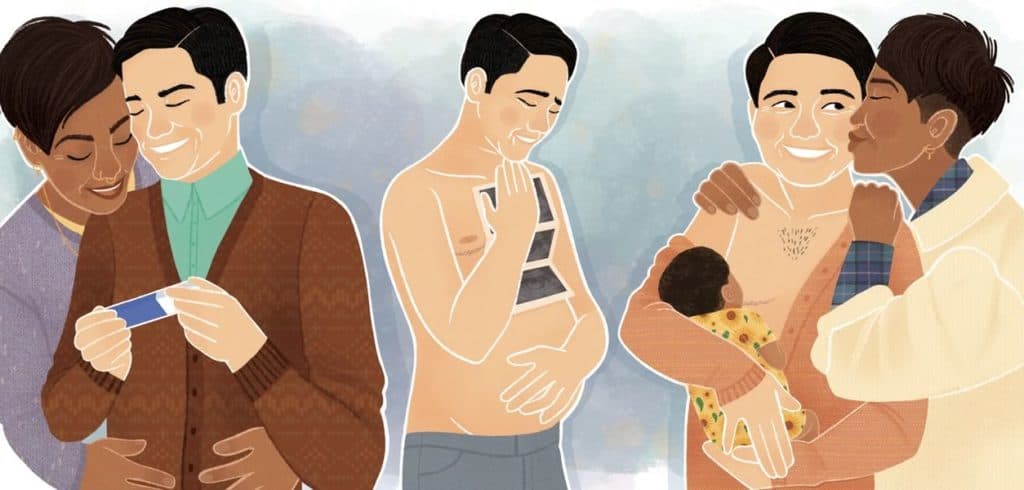
Solutions
The UK has a wealth of trans organisations, groups and communities. Several sexual health clinics are both trans led and focused, for example, London’s 56T and CliniQ, and Brighton’s ClinicT. These can facilitate both clinical care and the local development of trans communities. They may be key in identifying transmasculine people who are, or may become, pregnant and giving advice and support. Facebook groups such as ‘UK Trans* parents/parents-to-be’ provide space for transmasculine people to discuss their pregnancies and support each other, especially those who may live in rural or conservative areas. Healthcare professionals can play a role by naming and normalising transmasculine people’s identities and referring to support services where appropriate. Clinical care should be patient focused, and language individually tailored. Healthcare professionals should use inclusive language such as ‘pregnant women and trans people’ and ‘breastfeeding and chestfeeding’, and reflect this in the clinical environment. Where possible, booking forms and paperwork should have space for a preferred name, pronouns and gender. Some transmasculine people will become pregnant before transitioning. Therefore, it is important that providers do not make assumptions and instead simply ask everyone the open-ended question ‘What do you like to be called?’ as a means to elicit and use the appropriate name and pronouns. Being treated respectfully by being correctly addressed is likely to be a protective factor for perinatal mental health.
Some transmasculine people may experience additional psychological burdens for worsening dysphoria, having stopped testosterone before or during pregnancy, and face societal discrimination. Referrals may be needed for peer support, psychology, endocrinology and lactation advice. Midwives can advocate for their service users by briefing other clinicians in advance, with permission. It may be appropriate to offer appointments at home, at a GP practice, or at either end of hospital or scan clinics. Where confidentiality is paramount, out-of-hospital birth settings should be considered as per usual safe standard of care and private spaces offered, including on postnatal wards. Brighton and Sussex University Hospitals NHS Trust has developed a role for gender-inclusion midwives who provide clinical care, training for other practitioners and work to develop local guidelines. Similar roles that focus on improving care for all minority groups may benefit other NHS hospitals. Patient-centred practices that acknowledge transmasculine people and other diverse groups should be embedded in the curricula of healthcare professionals; pre-clinical, clinical, undergraduate and postgraduate. Teaching opportunities and continuing professional development should be available to improve skills and knowledge.
Education, management and supervision challenges
A midwifery student reveals that an experienced midwife who took over the care of Glen and partner Robin following transfer from the alongside midwifery unit for an epidural was coolly hostile in labour and made inappropriate jokes out of earshot.
What individual and system-wide responses and learning might be appropriate?
Conclusion
The UK is well placed to improve knowledge to benefit transmasculine people and healthcare providers. A growing community is trying to conceive, pregnant or already parenting. The increasing recognition of special factors that gender clinics did not anticipate and cannot manage has led to trans-focused sexual health clinics and gender-inclusion midwives. Alongside similar culture shifts in other healthcare fields, a strategic approach is required to: create new knowledge and a robust evidence base by research; support, fund and evaluate existing initiatives; and produce guidelines from responsible national bodies that take account of, and welcome, transmasculine people while delivering high-quality universal healthcare. TPM
References
- Moravek M, Kinnear H, George J et al. Impact of Exogenous Testosterone on Reproduction in Transgender Men. Endocrinology. 2020;161(3):1-13.
- Light A, Obedin-Maliver J, Sevelius J, Kerns J. Transgender men who experienced pregnancy after female-to-male gender transitioning. Obstet Gynecol. 2014;124(6):1120-1127.
- Hoffkling A, Obedin-Maliver J, Sevelius J. From erasure to opportunity: A qualitative study of the experiences of transgender men around pregnancy and recommendations for providers. BMC Pregnancy Childbirth. 2017;17(Suppl 2):332.
- Charter R, Ussher J, Perz J, Robinson K. The transgender parent: Experiences and constructions of pregnancy and parenthood for transgender men in Australia. Int J Transgenderism. 2018;19(1):64-77.
- Light A, Wang L, Zeymo A, Gomez-Lobo V. Family planning and contraception use in transgender men. Contraception. 2018;98(4):266-269.
- Ellis S, Wojnar D, Pettinato M. Conception, Pregnancy, and Birth Experiences of Male and Gender Variant Gestational Parents: It’s How We Could Have a Family. J Midwifery Women’s Health. 2015;60(1):62-69.
- Wingo E, Ingraham N, Roberts S. Reproductive Health Care Priorities and Barriers to Effective Care for LGBTQ People Assigned Female at Birth: A Qualitative Study. Women’s Health Issues. 2018;28(4):350-357.

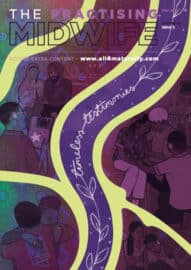

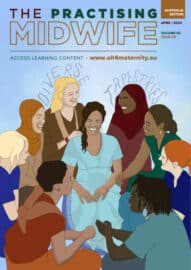



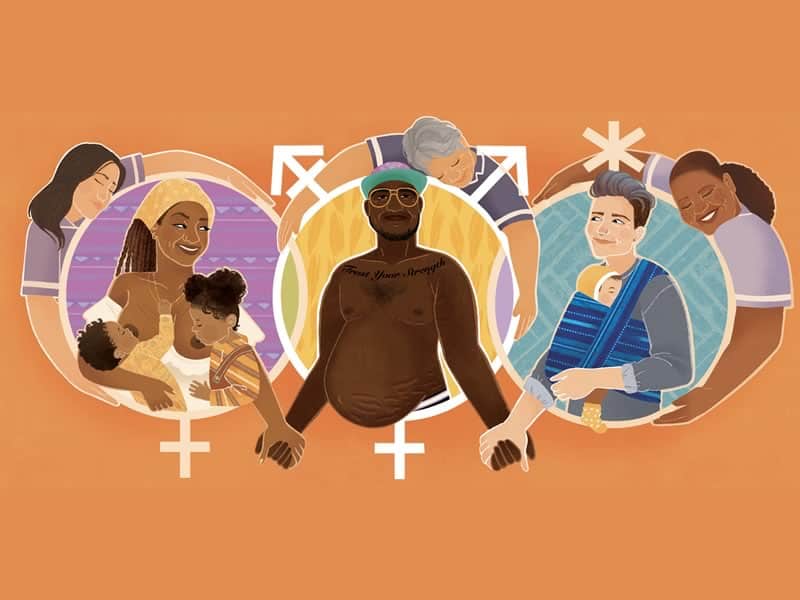


Trackbacks/Pingbacks